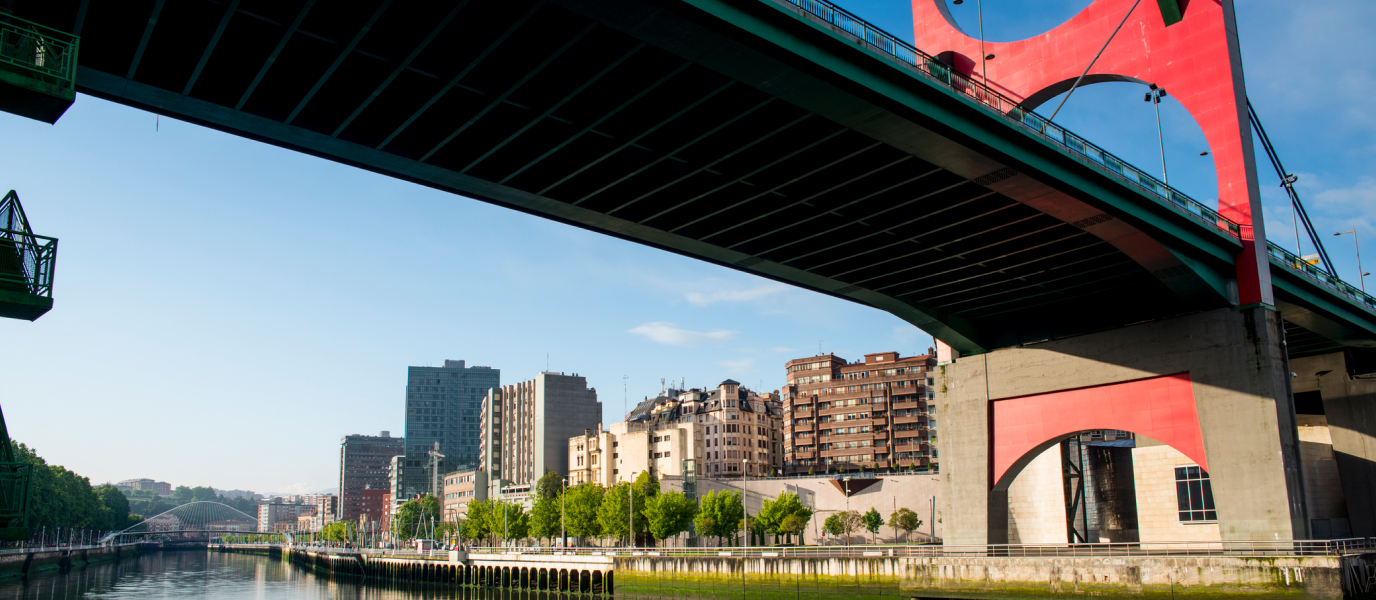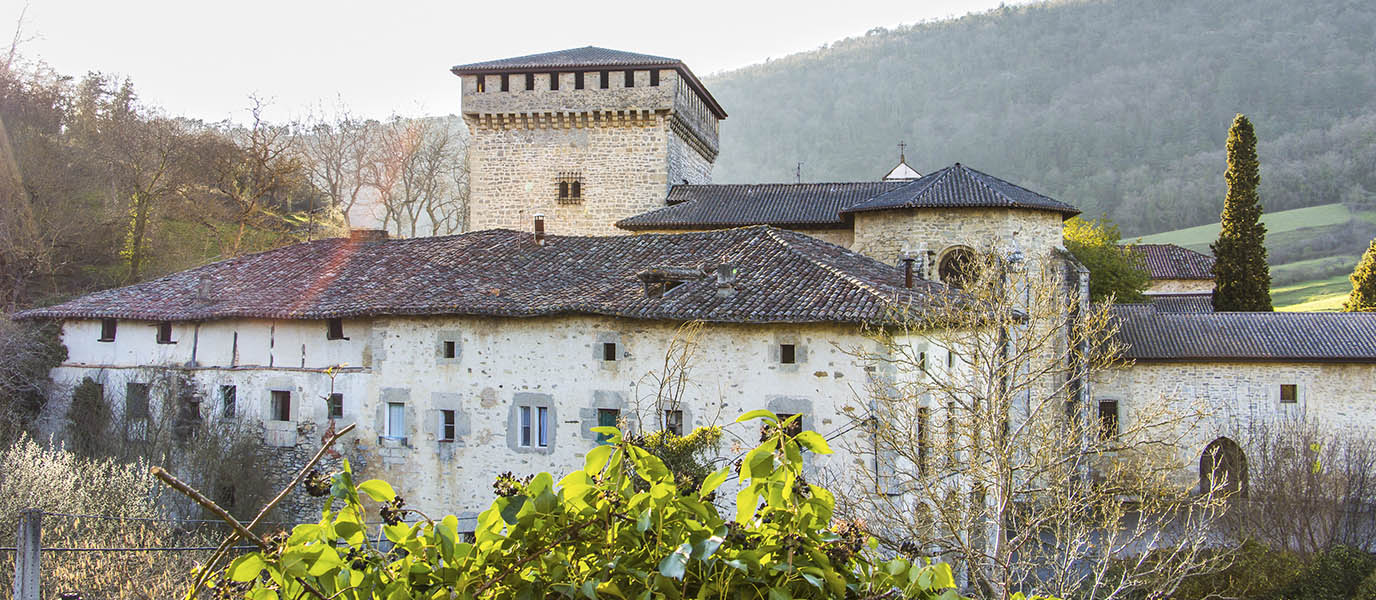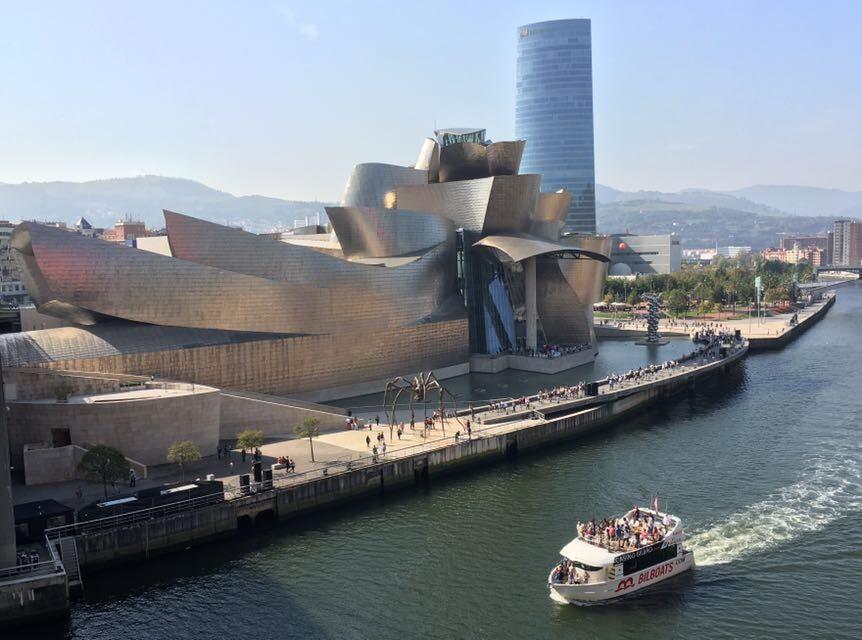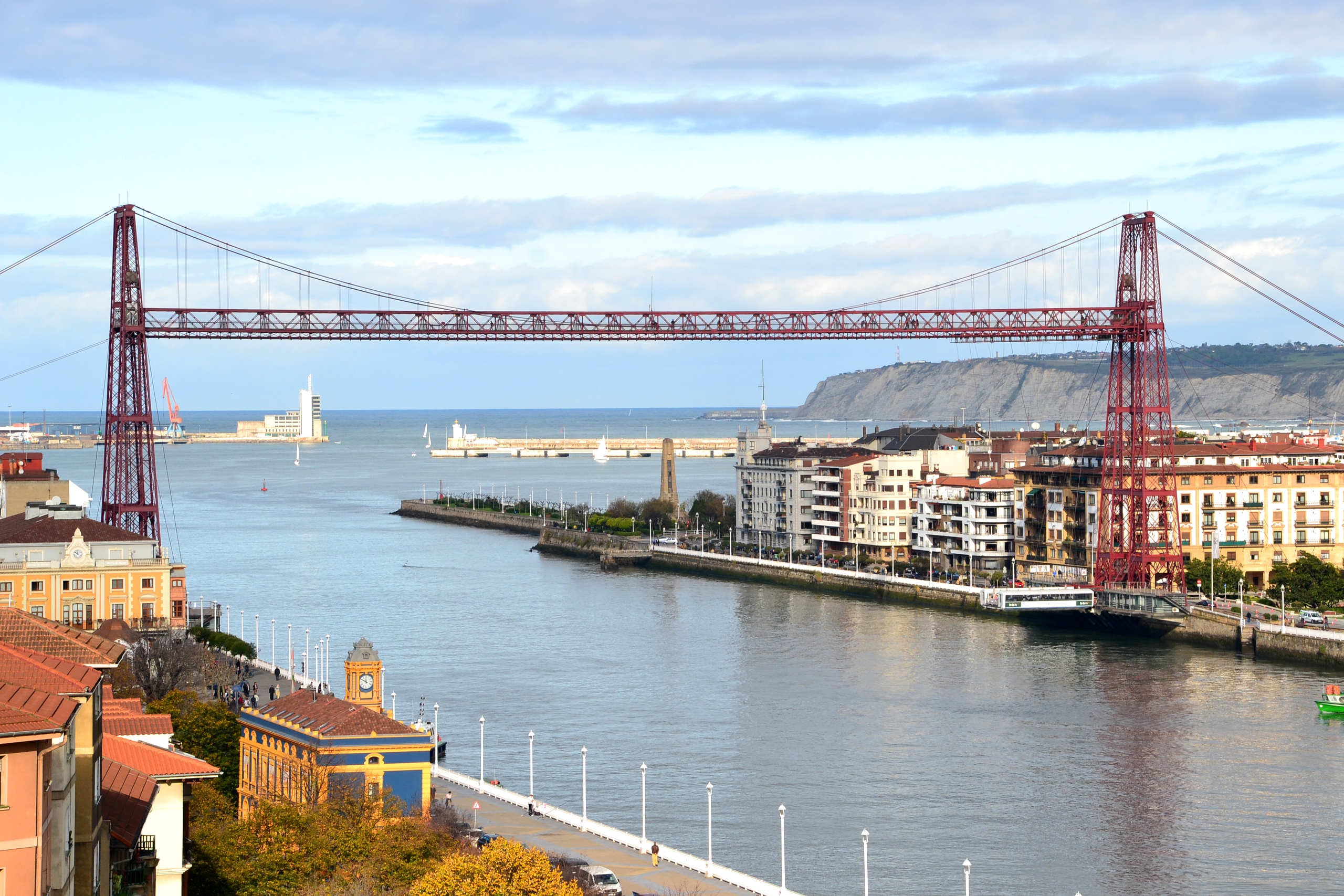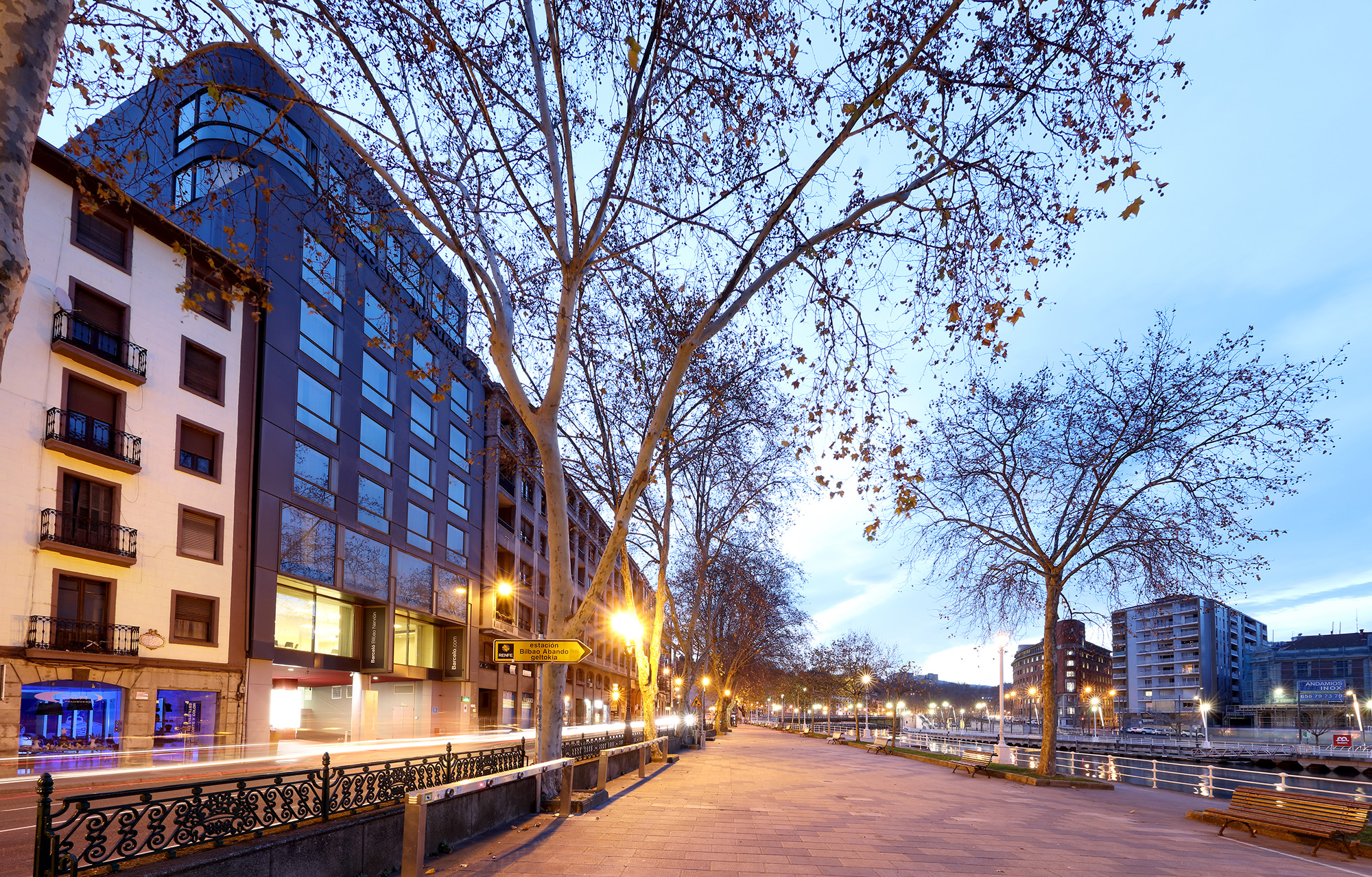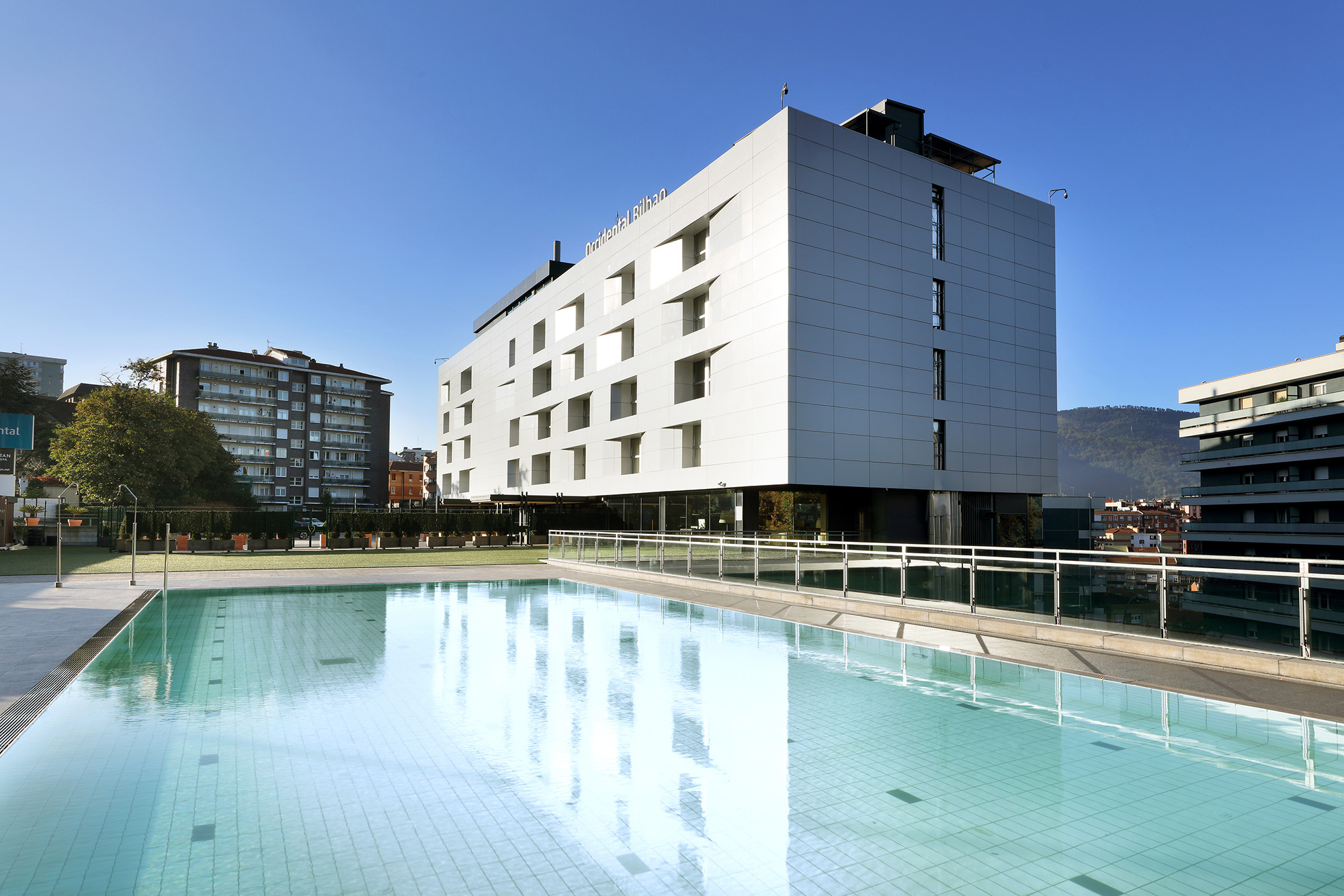For many years, Bilbao’s most iconic bridge appeared on street maps as the Príncipes de España bridge. However, no one referred to it that way. Ever since it was opened in 1972 it has always been the La Salve bridge—its official name since 2016—due to its position on the bend of the river from where, according to legend, the sailors returning to port would catch first glimpse of the Basilica of Our Lady of Begoña and would say a salve, or a prayer, to the virgin. Today it is also informally known as the Guggenheim bridge, as part of the museum was built right under it to connect to a tower standing on the other side, merging the bridge’s structure into the museum’s and thus becoming the most photographed bridge in Bilbao.
The Canadian architect Frank Gehry’s desire for his museum, opened in 1997, to become part of the history and culture of Bilbao has resulted in the bridge assimilating the Guggenheim’s cutting-edge, artistic spirit. In fact, you can access both sides of the bridge from the museum itself. The modern spirit of La Salve was forged in 2007 with the opening of the Red Arches by the French artist Daniel Buren to mark the tenth anniversary of the Guggenheim Museum. Installed on top of the bridge’s pillars, its impressive structure is silhouetted against the usual grey canvas that is Bilbao’s sky and, at night, the arch lights up in a fantastic interplay of lights.
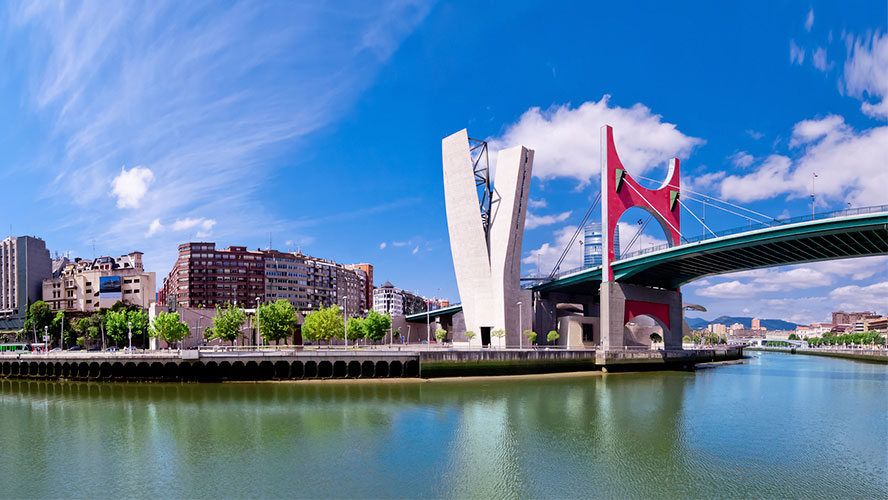
Nevertheless, the work has not been without controversy. Despite the fact that its presence has become a customary part of Bilbao’s urban landscape, over the last decade notable architects and engineers have criticised how the red arches take attention away from the museum, blocking some of its perspectives and clashing with its elegant deconstructive architecture.
A pioneering bridge in 1970s Spain
The beginnings of the La Salve bridge, opened on 9 January 1972, were somewhat more humble. It was built to facilitate the movement of vehicles and, in turn, to decongest the nearby Ayuntamiento bridge. Designed by the engineer Juan Batanero, it was the first bridge to be opened after the Civil War, when all the bridges in the city were blown up. Efforts were made to rebuild them at a later date but the La Salve bridge was to become one of the most advanced bridges of Francoist Spain. Until then a cable-stayed system had never been used before in the country and its metal board constituted another great innovation. Its notable height of 23 metres was conceived to enable all types of vessels to pass underneath at a time when some ships still travelled upriver along the Nervión to the Casco Viejo. The benefit was that it was not necessary to interrupt road traffic as occurred with the Ayuntamiento and Deusto bascule bridges, which caused serious traffic problems in a city with an increasing number of cars.
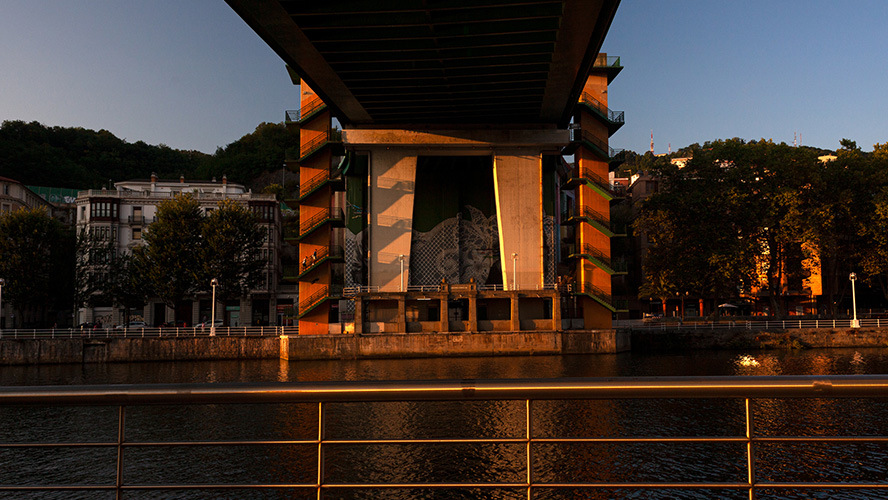
Since 2008, pedestrians have been able to go up to the bridge free of charge in its two lifts, which were installed in 1988. From up high, views in the direction of the Basilica of Begoña bring to mind those Basque sailors returning home thankful to the virgin after having risked their lives out at sea. On Plaza de la Salve, next to the bridge, a monument by Agustín de la Herrán installed in 1974 pays homage to them.




































































